Lay Out Project Plans Like a Windrow of Material
BY AsphaltPro Staff
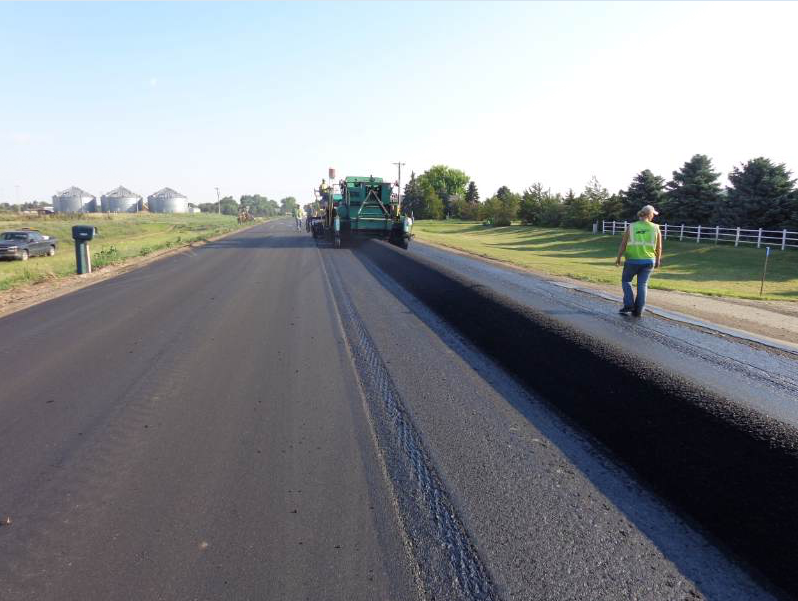
I had the opportunity to work with Border States Paving, Inc., of Fargo, N.D., in the fall and would like to share some of the paving team’s best practices here. The highway project we worked on gave the perfect opportunity to prepare clean longitudinal and transverse joints, and to set up bonus-worthy rolling zones. The project might differ from your typical job in the way the mix was delivered to the hopper. We can discuss the good ways the team lined up material delivery, too.
Let’s begin with the most important part of any project—safety. I’m proud to share Border States Paving has an accident prevention program where they strive for “Goal Zero.” That means the top management wants no incidents and no injuries. They spell it out on their website: “We participate in a Workforce Safety & Insurance Safety Management Program and our team members step up to the plate to participate in safety committees at every job location.”
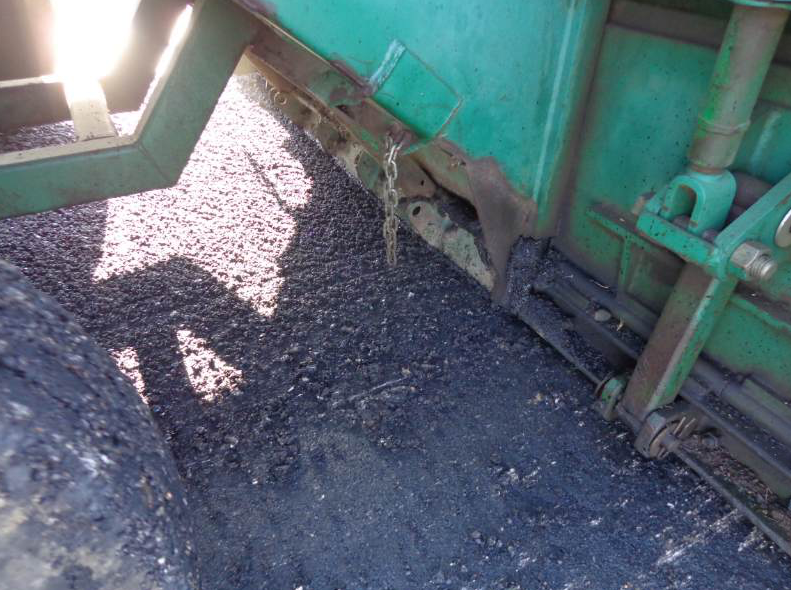
Here’s a closer look at the clean surface behind the strike-off.
Next, consider the equipment you’ll use on your project. Border States set up a portable asphalt plant to supply this project, which included 10 miles of two-lane highway plus side roads and stub outs. For the mainline, they had a ride spec to meet. That meant taking care of some patching and leveling before placing the top course. They wanted to run automation, of course, and this was the first time the crew had used two skis.
When they bought their Vogele paver, they only purchased one 30-foot ski, which was MOBA technology. When they decided to do the highway job, they needed to use two skis, so they attached a Topcon ski with Topcon technology that they had on hand. It’s a 25-foot ski. This arrangement put a lot of pressure on the screed operator because he had to work from two sides of the machine. (Since the project’s completion, the team has purchased an additional MOBA ski to even out the paver.)
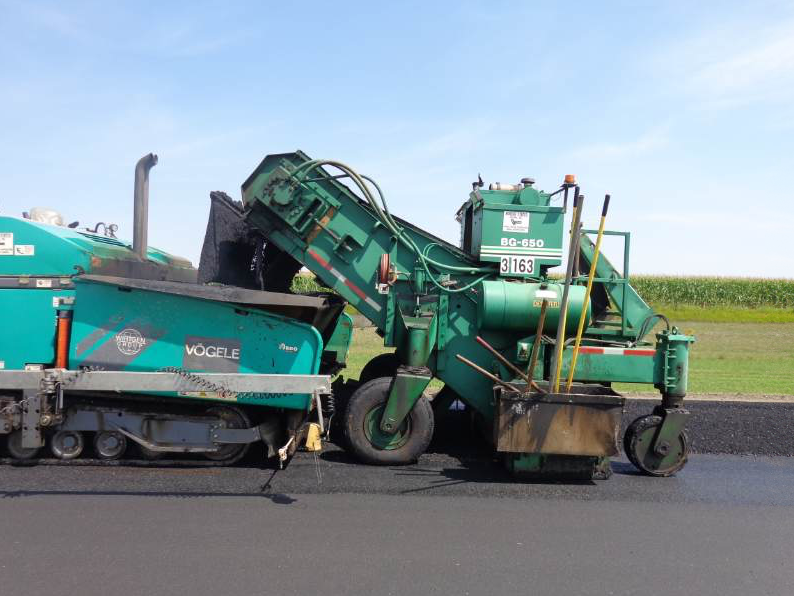
This side view shows where the back strike-off plate is and how clean the space is between the pickup machine and paver. There’s a hard linkup between the pickup machine and paver right behind that rubber tire. The air pressure in the tire needs to be between 90 and 100 pounds. When the conveyor gets loaded up, you don’t want it to buck up and down. You need the strike-off to remain against the ground. You need the front tires to remain level. There’s a conveyor belt that helps the mix stay in control going into the hopper insert. So pick up the material without choking the machine, without causing it to buck, to keep it homogenized and to drop it in a controlled manner into the hopper insert. In this case, the team at Border States made the 8 to 10-ton capacity hopper insert.
They paved at a pace of 24 feet per minute by placing about 4,000 tons, then setting back to pave the next 4,000 tons in the adjacent lane. An 84-inch drum Hypac served as the breakdown roller. They used a Dynapac 84-inch drum roller for intermediate and another steel roller with rubber tires for the finish. In the end, they achieved the ride spec with a smooth 10 miles of pretty asphalt pavement.
Roll With It
Take ambient temperatures and wind conditions into consideration when modifying a rolling pattern, but follow general rolling zones to set it up. In this example, the breakdown roller is 84 inches wide. That lets the operator make three coverages of the 14-foot mainline and 4-foot shoulder mat. She drives up within 40 feet of the screed and rolls back about 250 feet.
1 drive up + 1 drive back along the joint side = 1st pass
Set over
1 drive up + 1 drive back along the mainline edge, crossing over stop mark = 2nd pass
Set over
1 drive up + 1 drive back on the shoulder = 3rd pass
Set over
1 drive up to get within 40 feet of the screed and begin the pattern again
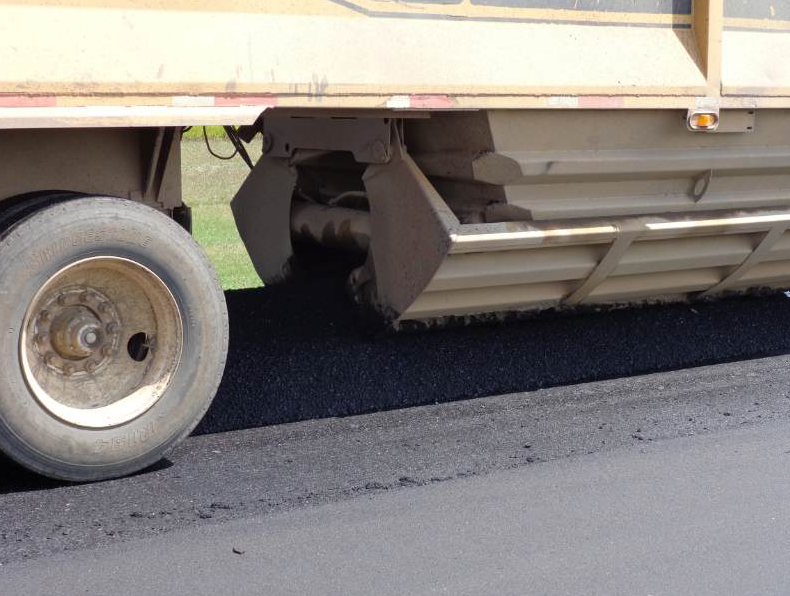
This is the truck depositing the mix. They don’t open the belly dump any further than this. They’ll end up with too much mix on the ground and it’ll overflow the paver if they open it too far. It takes years of practice and experience to get this just right.
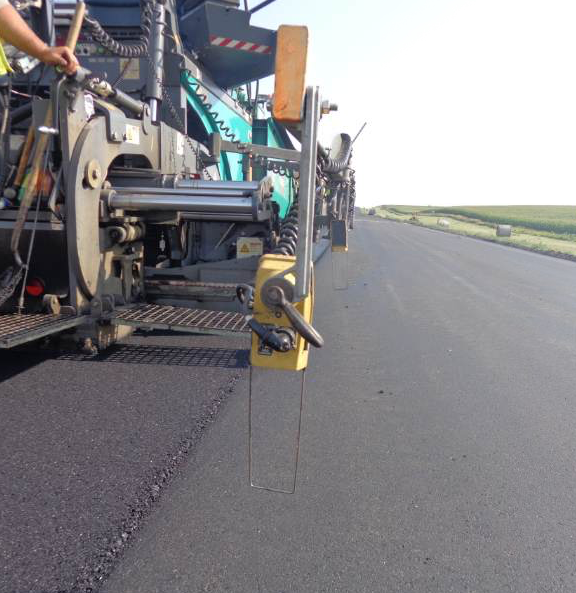
The Topcon ski is out about 2 ½ feet matching the joint on the new mat. The material is about ½-inch above the joint for perfect compaction to take place. The guide bar is out for the paver, which is paving 14 feet wide. The endgate is tight to the edge. It’s a different apparatus from the MOBA device, which is on the other side of the paver.
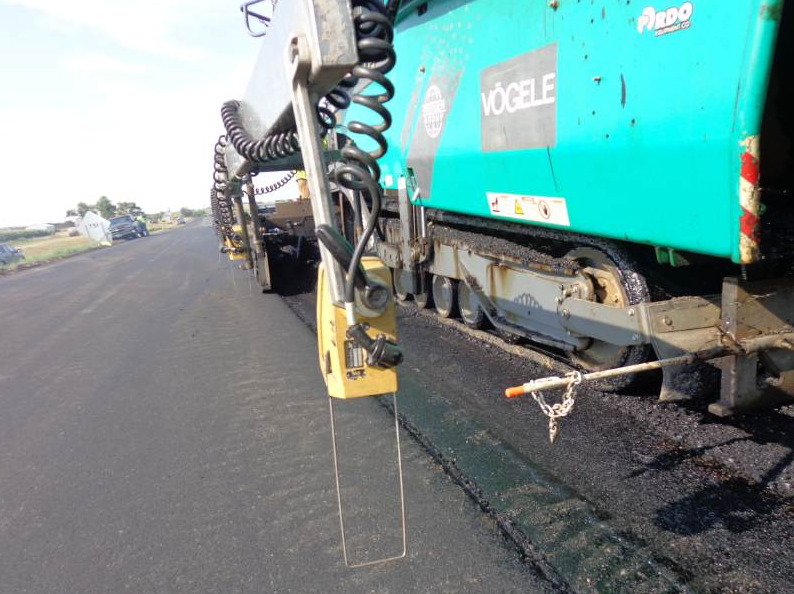
The Topcon ski is out about 2 ½ feet matching the joint on the new mat. The material is about ½-inch above the joint for perfect compaction to take place. The guide bar is out for the paver, which is paving 14 feet wide. The endgate is tight to the edge. It’s a different apparatus from the MOBA device, which is on the other side of the paver.

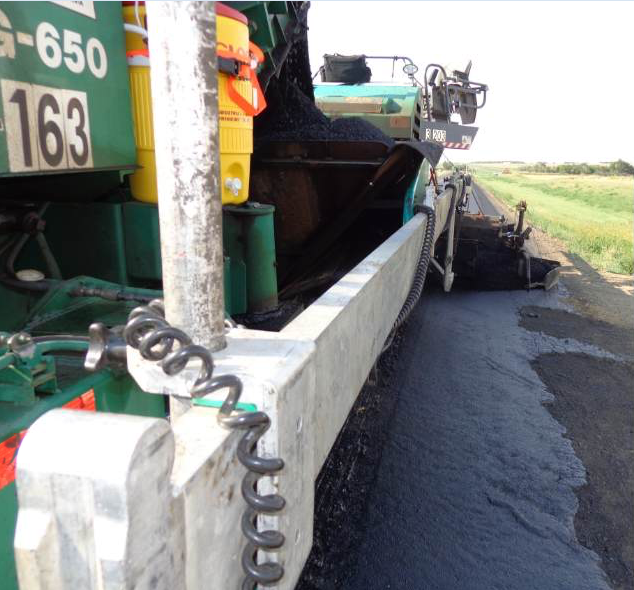
The crew ran MOBA technology on the other side of the machine. This ski is 30 feet long and on the side of the road that is rough. We didn’t want to match the rough edge, of course, so we kept the ski close to the paver.
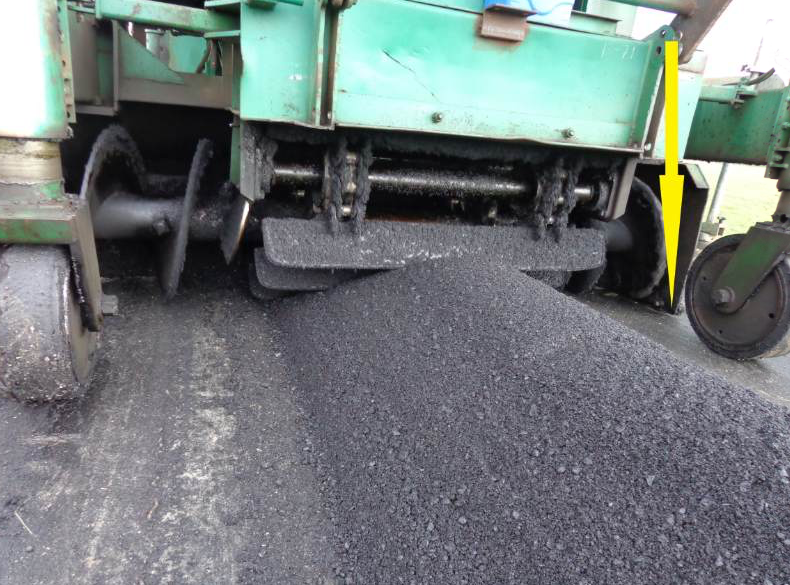
The crew ran MOBA technology on the other side of the machine. This ski is 30 feet long and on the side of the road that is rough. We didn’t want to match the rough edge, of course, so we kept the ski close to the paver.
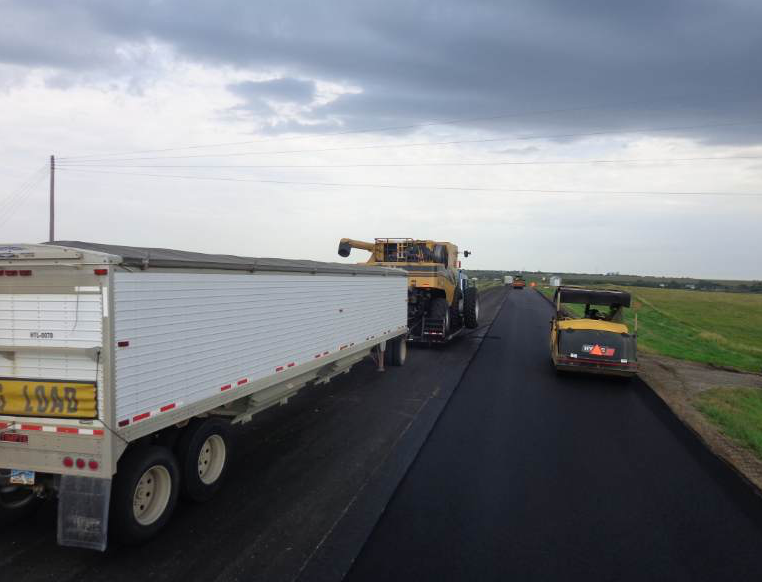
The traffic out on the plains is a little different than that you experience in urban paving zones. Farming equipment and trailers filled with corn went by on occasion. You can also see the compaction team in this picture. Looking from the back of the paver, you can see the Hypac in breakdown position. The Dynapac machine is the intermediate roller.
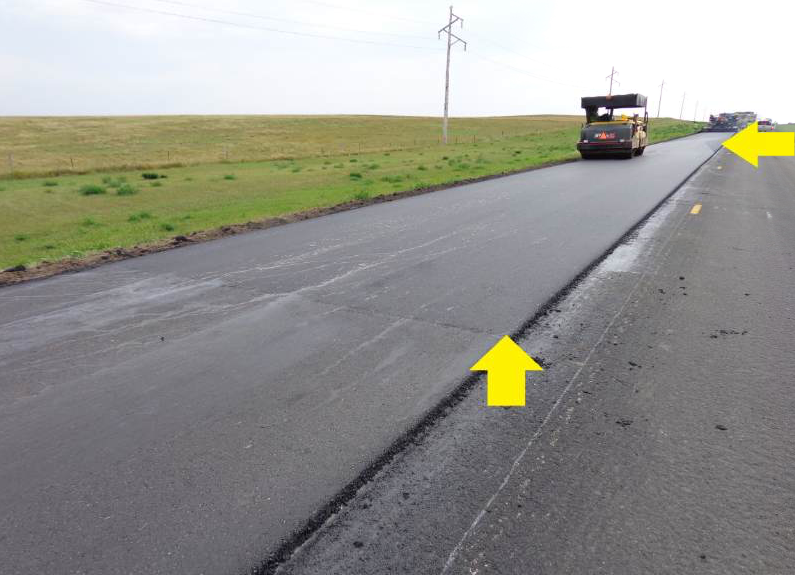
In this picture, you can see they’ve just taken off from the joint in the foreground where the yellow arrow is pointing. That’s a beautiful transverse joint that came out great. They’re paving 14 feet wide with a 4-foot shoulder, which factors into the rolling pattern. The roller operator’s name is Sandy and she did a great job of being consistent with the pattern. She’s operating an 84-inch drum Hypac roller at 4,000 vibrations per minute. It might look a little different to most of us because it has a shield on it. Out there on the plains there’s a lot of wind. She also has a shield behind her back because the wind out there cuts right through you. Take a look at the mat where the smaller yellow arrow is pointing. She crosses over her stop marks.
